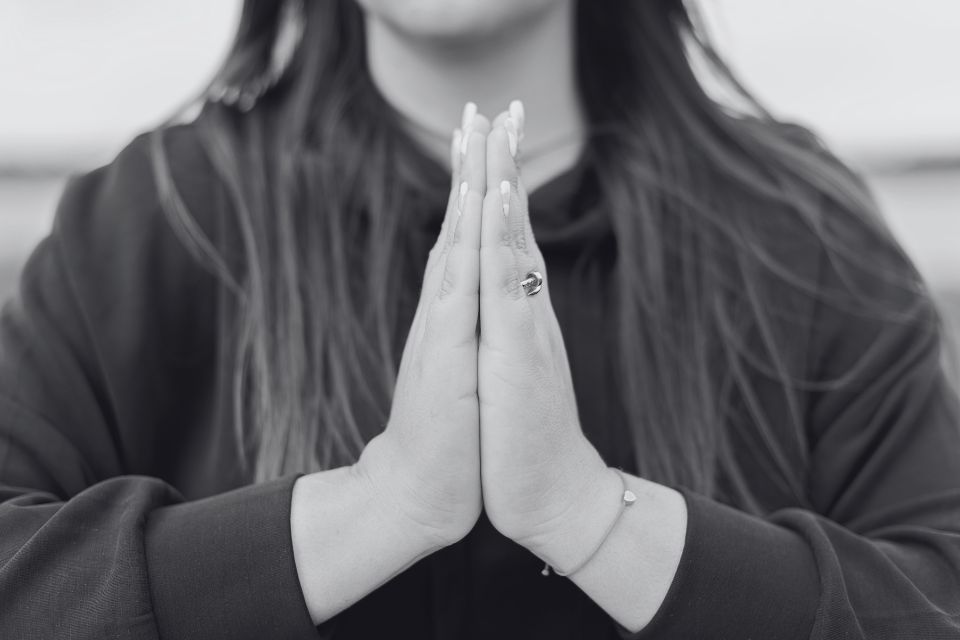At the end of every yoga class, we finish by placing our palms together in front of the heart centre and saying, ‘Namaste’. I like to add a thank you to my class attendees for joining me in their yoga practise for the day, and then we make our merry ways home.
But do you know what Namaste means, and where it comes from? Have you heard of the alternative, Namaskar? Let’s look more closely at the ways yoga practitioners like you and me can say goodbye at the end of class…
Namaste
Namaste is Sanskrit, an ancient Indo-European language of India, in which the Hindu scriptures and classical Indian epic poems are written. Many northern Indian languages have a basis in Sanskrit; much the same way many European languages have roots in Latin.
Namaste means, ‘I bow to you’, and is used as a mark of respect and gratitude. This is why yoga teachers say it to our class members after practise, and why attendees say it in return to their yogi.
We hold our hands in front of our heart centre to show love and gratitude, but as we draw them down from above our heads we can hold them to our forehead and bow low as an indication that the person you are gesturing to holds a higher rank.
My preferred interpretation of the different hand positions is this… Sweep both arms up and hold them above the head, hands apart to welcome the warmth and energy from the universe.
Bring your palms together in Up Salute and draw that energy to your forehead. Say to yourself, ‘I think only good thoughts’, draw them down to your mouth and think, ‘I speak only kind words’, then bring them to your heart centre and think, ‘I hold love in my heart’, then say Namaste with a slight bow.

Namaskar
If Namaste means all that, why would we need Namaskar?! Like Namaste, Namaskar is Sanskrit and has roots in bowing, but this time also ‘doing’. It is an active phrase and means that you show your respect and gratitude in the things that you do, not just the way you feel. In southern India Namaskaram is used.
As it is an active phrase, Namaskar is used as a more formal term, useful in larger gatherings when yogis of considerable status are present, or teaching.
And, did you know, that the Sanskrit of Sun Salutation, a staple series of movements in Vinyasa is Surya Namaskar? So, we are literally giving powerful respect to the sun during that flow. Other yoga poses that use Namaskar include:
Pranamasana (Prayer Pose):
This can be the starting and ending pose of Sun Salutations, where the palms are brought together with the thumbs touching the sternum.
Urdhva Namaskarasana (Up Salute):
This pose involves raising the arms overhead with the palms together.
Ashtanga Namaskara (Eight-Limbed Pose):
This pose is often part of Sun Salutations and involves lowering the body to the floor with eight points of contact: hands, knees, chest, chin, and feet.
So, you can see that there are times when Namaste is most appropriate, and when you might hear Namaskar instead.
And on that note, please don’t feel you should be addressing me with any greater respect than you already show me, having you share my practise is thanks enough! Vinyasa practise is every Monday at 7pm in Carterton Community Centre. Find out more and book on the Portal.

